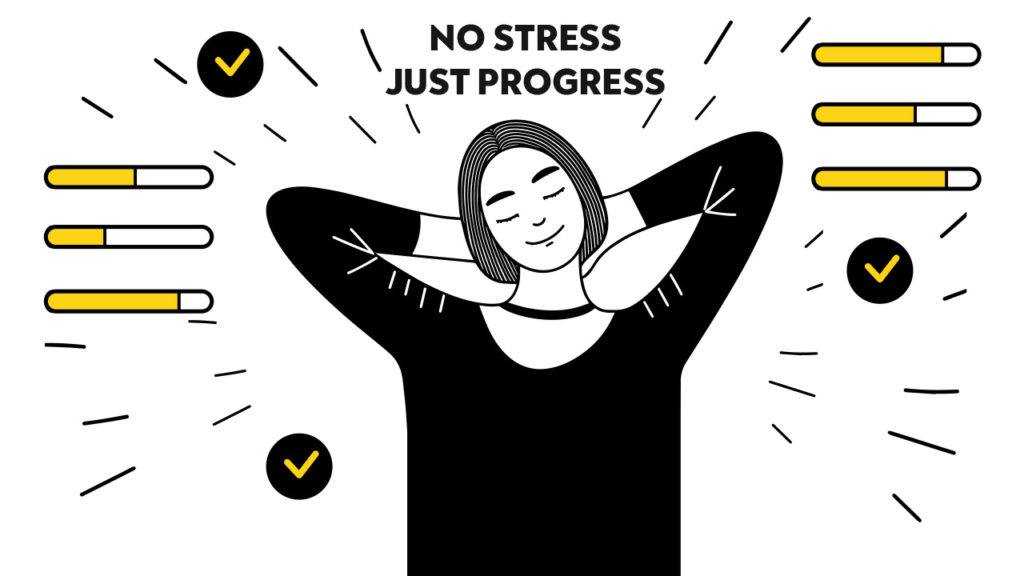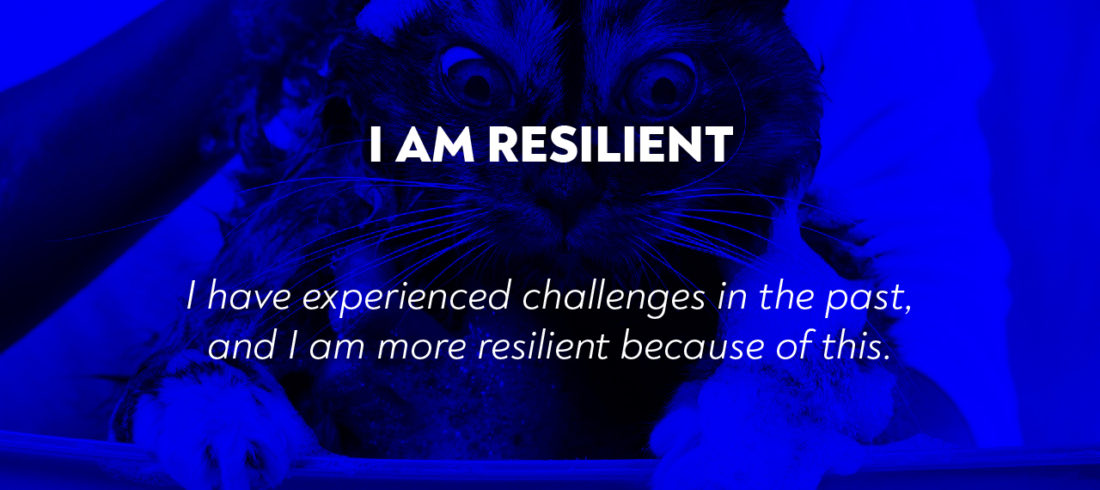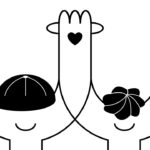
Introduction
Truly, the reward can be anything and you are the one who knows how to reward yourself the best. The important thing is to create a mechanism that allows you to stay consistently motivated. A positive feedback loop can enhance creativity and the quality of your work produced, as you will be feeling much more satisfied with your efforts. By integrating a self-reward system, you will, as a result, create a more structured and rewarding work environment, leading to sustained motivation and efficiency. Don’t mistake this for indulging yourself – quite the opposite, those are strategic tools for fostering motivation, maintaining mental health, and enhancing overall productivity, ultimately contributing to more successful, fulfilling and efficient freelance experience!
Beginning freelancers very often tend to think that the biggest obstacle in their freelancing journey is the high entry point – getting first clients, first projects – that’s all incredibly hard and challenging. And then you get your first job. You open your laptop, excited about how you are going to become your own boss and schedule your day however you like. You start working. 15 minutes go by. That’s right, you need a glass of water! You come back. What’s that? A notification? You scroll your phone. Okay, back to work. But let’s first respond to some emails. And before you know it, an hour has passed. You haven’t done anything at all yet.
Where’s the problem? Some would say it is the availability of distractions in your nearest surroundings. Others would argue it is a lack of a clear system of work that would let you keep your focus. We, however, have a more holistic approach. For us this is a symptom of lack of efficiency. But no worries, that’s completely normal. Being a freelancer requires being able to create a sort of a shift in your mindset. After all, the entire world is created so that you are used to the 9-5 system. Stepping outside of it and taking responsibility for your own actions requires courage, and a different approach to working in general. So here’s our approach to efficiency – a set of measures that were proved to work in our practice.
Getting started
We can divide ways of improving efficiency into two categories: those you actually implement during your work, as well as the “preventive” ones, the ones that create a good environment for efficiency in advance. First, let’s take a look at the latter. Here’s how to get started for maximum efficiency, so that you are set for success!

Eliminating distractions
This one seems like a no-brainer, but it’s also always worth mentioning. You need a space that enhances productivity and pushes you to focus on your tasks. If you have your phone next to you, let’s not lie to ourselves – you will be checking it. And even if it’s just for a brief moment, the worst thing isn’t actually ruining your time, but your flow. Make sure there are no distractions nearby. De-clutter the nearest space. Use air freshener. Turn the phone to airplane mode and maybe use noise-canceling headphones.
Eliminating distractions doesn’t need to necessarily mean completely cleaning your workspace – it might mean as little as changing the environment. Some freelancers like to use spaces such as co-working spaces, coffee shops or even… parks and forests. Making a clear division between living and working space can be of tremendous help if you are having trouble concentrating.
Some people also find that they work more efficiently when working with other people. Previously mentioned co-working spaces are a great way to do that. You can also always meet up with your freelancing mates, or even… use a virtual co-working space! Such sites connect you with another person prone to procrastination. You simply write down everything you want to get done and… get it done (with added pressure of someone watching you).
Setting priorities
How do you decide on approaching the tasks that await you during your workday? If you fail to set priorities, you won’t be able to determine any order in which to deal with the tasks. Setting priorities doesn’t establish the order automatically, but can help you to do that. It is worth it to create some sort of a system in which you are getting things done.
What could that look like? For example, you can divide the tasks by complexity the night before, and start with the hardest ones, so that you can enjoy a more chill end of the day. Or you can start with the least complex ones to clear your head before “big-game hunting”, or you can establish your own order.
This methodology works as a great blueprint – after all, you are the only one to know what is the most important criteria for you. Try swapping complexity for the due date or estimated length it will take to get the task done. The blueprint looks like this:
- Create criteria by which you will divide tasks;
- Create a rule by which you order tasks within a category;
- That’s how you set priorities!
It is good practice to start a day with an already made order in which you run tasks. This way you don’t need to waste time to determine the plan. We suggest doing it as the last thing of the day.

Create a clear workflow
The last step before jumping right into work is creating a clear workflow that will act as a sort of a “guide” through everything you do. What are the stages of your work? How do you know if your project is having a good pace? Do you divide work into stages? How much time does it take you to complete a task?
Workflow is an answer to all of those questions. To put it simply, it is a set of rules and practices you apply to create a sort of a “funnel” which directs the way you work. A good example of such workflow methodologies are the famous Getting Things Done or Kanban Tables method (which, by the way, is the methodology we use in our office).
We recommend using some sort of predefined workflow – those have been tried, tested and optimized by thousands (if not millions) of freelancers before you. If something works, use it! Try a few different things out and choose the one that works for you. You will know when you find the right one!
Getting to work
You’ve applied all the steps listed above. You are ready to get started and be more efficient than ever. But even the best preparation doesn’t guarantee productivity. When it comes to the reality of work, it is very easy to get distracted and find yourself doing something completely unrelated.
Divide work into smaller pieces
When you get down to the project and just start doing it, you are very likely to miss the details looking for a bigger picture. How to not miss anything when working on a project? Before you start, create Definition of Done – a checklist that lists all of the activities that the project consists of. Only after completing every single task can you say that something is done.
How does this help your efficiency? Without creating set requirements for finishing a project, you will be missing small details. Then your client will send it back for a small 15-minute amendment. It seems like an easy task, but it has the potential to completely ruin the flow of your day. And those small omissions can take up a big chunk of your day if summed up.
Dividing work into smaller pieces has one more additional benefit – having more manageable tasks requires less mental energy and doesn’t seem as “scary” as a big project. It also gives you a greater sense of accomplishment. You might have not finished the whole project, but you might have done 5 tasks. That’s just a little change in optics, but a massive swift in mentality.

Creating a reward system
Even the hardest task seems a tiny bit easier, if you have something to look forward to. That’s why you might want to create a reward system, which will work as a source for positive reinforcement.
Unlike in a traditional workspace, it is hard to get constant feedback, that gives you a sense of a “job well done”. It is important that you are able to provide that for yourself. Create a rule that involves rewarding yourself. For example, each time you get a positive comment about your job, you take yourself out to your favorite cafe.

Tracking your time
Tracking time when working a conventional 9-5 job is taken for granted. Part of the reason is the limited amount of time in which you can finish a task. But when you are a freelancer, nobody measures how much time you spend doing something. So maybe you are spending unnecessarily long doing something that normally takes you half as much time? You will never know unless you start tracking your time and monitoring your progress.
Only after collecting data regarding your work can you actually gain insight into your productivity. Efficiency can only be measured in relation to something. So how can you know if you are efficient if there’s nothing to relate to? By tracking your time, you gain a clear picture of how long specific tasks take and identify patterns in your workflow. This information is invaluable for setting realistic deadlines, estimating project timelines accurately, and ensuring you are spending your time wisely across various tasks.
Time-tracking can also enhance your transparency, as you will be able to show your clients how much time you’ve spent on their projects, building trust and justifying your rates. It allows you to provide detailed reports and breakdowns, which can be particularly useful for clients who require accountability and transparency. Furthermore, understanding where your time goes helps you identify areas where you might be losing productivity, such as frequent interruptions or overly long breaks. By addressing these issues, you can streamline your workflow and focus on high-priority tasks, ultimately improving your overall efficiency.
Time-tracking can also improve your freelancing-life balance by helping you recognize when you’re overworking and need to take a break. This can prevent burnout and ensure that you are working at your best capacity (when you are freelancing very often you might want to finish a project in spite of everything, which leads to overworking without even noticing). Overall, time-tracking your freelancing routine is a powerful tool for enhancing productivity, ensuring transparency, and maintaining a healthy work-life balance.
How to work efficiently as a freelancer?
There’s no one-size-fits-all when it comes to the topic of freelancing efficiency. That’s why our goal was never to give you a “recipe” for efficiency, but rather introduce a few blueprints that are easily modifiable to your own needs.
The most important lesson you should take away is that the key to efficiency is creating an all-in-one system that guides you from the beginning of the project till the end. Efficiency and focus isn’t an ability you do or do not have. It is more about creating conditions that limit any obstacles.
Sometimes you will fail. After all, throughout your life you’ve been conditioned to a completely different type of working environment. Freelancing takes courage – and you’re on the right track to success!








